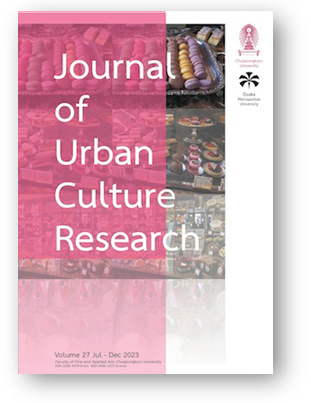Preserving Traditional Clothing Identity: An Overview of the Past and Present Uses of Aso-Oke by the Ondo People of Southwest, Nigeria
DOI:
https://doi.org/10.14456/jucr.2023.24Keywords:
Aso-oke; Handwoven; Ondo People; Clothing Identity; Textiles; NigeriaAbstract
Hand-woven fabrics such as aso-oke were the major clothing items especially for the commemoration of traditional ceremonies and festivals in Ondo land before the colonial era in Nigeria. Art historian review methods were adopted for this study by reviewing related literature. Data was gathered from both online sources and physical libraries. The population of the study include the inhabitants in Ondo town, Southwest, Nigeria. The study also used interview for data collection and the data collected was analyzed using the narrative method. This study surveyed the types of traditional aso-oke used by the Ondo people in the past and present times; and identified Alaari, Sanmiyan, Etu, Petuje and Ogungunelu as the major ones. Therefore, this study examined their uses in the past and recent times and considered developmental trends in the use of these types of aso-oke. This study dwelled more on historical records as methods of data collection. In conclusion, this study revealed that Ondo people are prominent users of aso-oke fabrics and also preserver of the cultural identity of the Yoruba people of Southwest Nigeria through the use of aso-oke fabrics.
Downloads
Published
How to Cite
Issue
Section
License

This work is licensed under a Creative Commons Attribution-NonCommercial-NoDerivatives 4.0 International License.
Authors authorize the JUCR to publish their materials both in print and online while retaining their full individual copyright. The copyright of JUCR volumes is retained by Chulalongkorn University.
The views and opinions expressed herein are those of the individual author(s) and do not necessarily reflect the policies or opinions of the Journal (JUCR), it editors and staff, Chulalongkorn University, or Osaka Metropolitan University.








